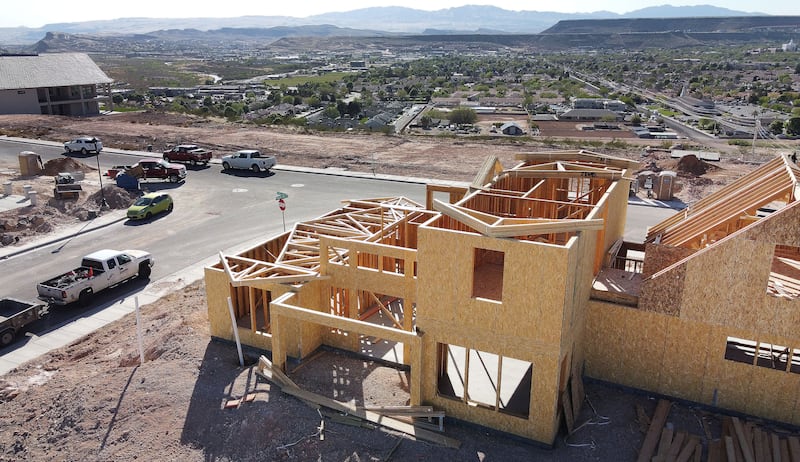Despite being the fastest-growing state in the country the past 10 years, Utah’s population did not increase enough to gain another seat in the U.S. House of Representatives.
Results of the 2020 census released Monday showed the Beehive State grew 18.4% over the last decade, and now has just under 3.3 million residents. Idaho, Texas, North Dakota and Nevada rounded out the top five in terms of percentage growth.
Utah House Speaker Brad Wilson, R-Kaysville, said it’s no surprise that Utah was the fastest-growing state.
“Our beautiful landscapes, business and family-friendly policies, and endless opportunities are hard to beat. How we grow matters and we must manage this rapid growth strategically,” he tweeted.
Net migration accounted for 35% of the state’s growth, totaling 177,242 people between 2010 and 2020, according to Mallory Bateman, a senior research analyst and state data center coordinator at the University of Utah’s Kem C. Gardner Policy Institute.
Natural increase — births minus deaths — made up 65% of the growth, totaling 330,489 people over that period.
According to the 2020 census, the South grew the fastest over the past decade with a 10.2% increase in population, followed by the West at 9.2%. The U.S. population now sits at just under 331.5 million, a 7.4% increase over the 2010 census but lower than the previous 10-year growth rate starting in 2000.
While Utah’s population swelled, the state fell short of getting another member of Congress.
Utah has had four U.S. House seats since picking up one after the 2010 census. Democratic Rep. Jim Matheson, who had previously represented the 2nd Congressional District, defeated Republican Mia Love in the 4th District’s first election in 2012. GOP Rep. Burgess Owens currently represents the district.
Each of the nation’s 435 congressional districts now represent an average of 761,169 people. In Utah, House members each represent about 825,000 residents based on the new population figures.
Although the state won’t be getting a fifth House member, the newly organized Utah Independent Redistricting Commission will redraw political boundaries based on the 2020 census. The panel held its first meeting earlier this month.
In 2018 voters narrowly approved Proposition 4 to promote fairer drawing of congressional district and legislative boundaries to avoid gerrymandering. The Utah Legislature last year passed SB200 creating the makeup of the commission.
Only six states picked up House seats — Texas gained two and Colorado, Florida, Montana, North Carolina and Oregon picked up one each.
Meanwhile, California, Illinois, Michigan, New York, Ohio, Pennsylvania and West Virginia each lost a seat.
The number of seats in the remaining 37 states will not change. The reapportioned Congress convenes in January 2023.
How the change in the number of congressional seats in those 13 states affects the political landscape remains to be seen.
“Don’t anticipate that this will rewrite the math in some sort of definitive or fundamental way,” said Chris Karpowitz, co-director of the Center for the Study of Elections and Democracy at Brigham Young University.
But, he said it could slightly change the calculus for electing the president, and that could matter in a close election.
“A lot will depend on how the districts are drawn, whether the legislatures in places like Texas and North Carolina are going to draw those districts in ways that lead to competitive districts or whether they favor one party over the other,” Karpowitz said.
Two red states — Texas and Montana — picked up a total of three new House members. Two blue states — Oregon and Colorado — and the swing states of Florida and North Carolina each got one.
Meantime, the blue states of California, Illinois and New York, and West Virginia, a red state, lost seats. Also losing a seat are blue-leaning Michigan and Pennsylvania as well as Ohio, a battleground state.


